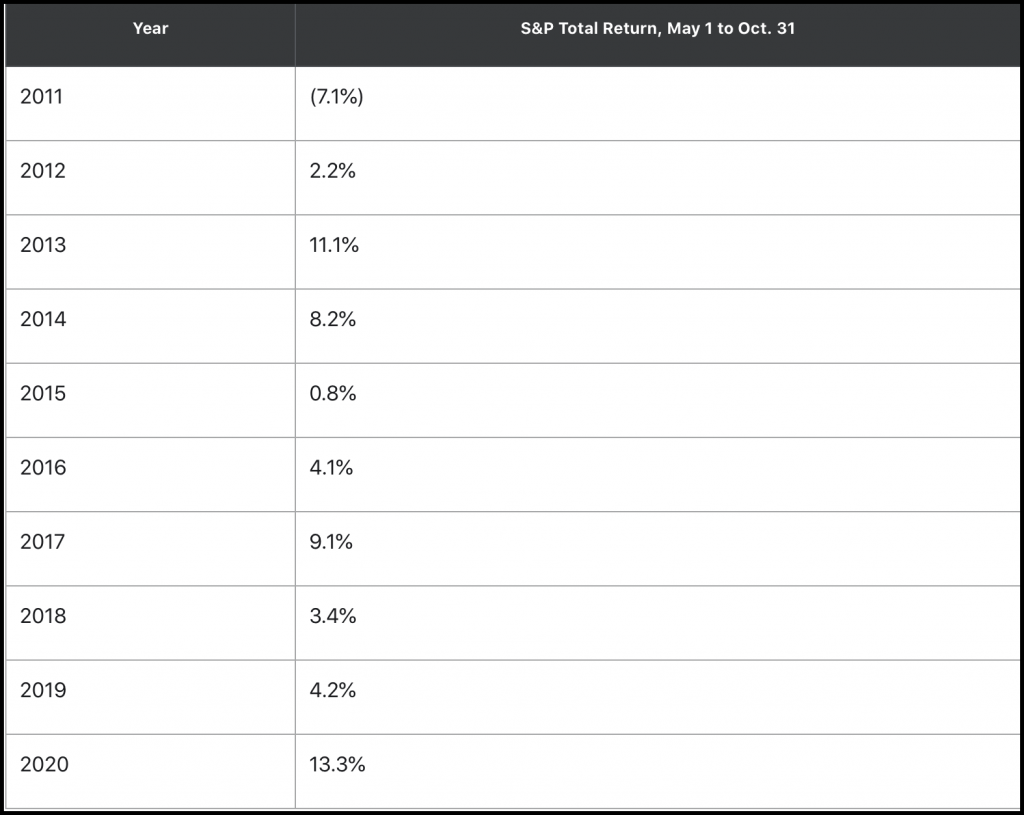Related Blogs
May 3, 2021 | Michael Reilly
 We’ve all heard the old Wall Street adage “Sell in May and go away.”
We’ve all heard the old Wall Street adage “Sell in May and go away.”
It finds its roots in the historic seasonality of market performance.
According to the Stock Trader’s Almanac, the “best” six months to invest in the stock market is between November and April of the following year.
While the period between May 1 through October 31st has become known as the seasonally weak or “worst” six months for market performance… a time when market performance tends to be muted at best.
When you think back on stock market history, it’s easy to understand where the sell-in-May rule got its appeal.
The stock market crash of 1929 happened in October. The 1987 crash also happened in October. And when you look back at the financial crisis in 2008 and 2009, the big declines for the stock market began in September and continued into October.
However, the rule’s track record is far from perfect.
Just consider 2020, the stock market plunged while in the midst of the seasonally strong period (in February and March), falling in excess of 34% – giving followers of the rule big losses.
While from May to October ‘20, the seasonally weak period, the market regained all of its lost ground with the S&P 500 index ending the year up 15.36%, assuming you stayed invested.
Interestingly, over the last 10 years, the period from May 1 to October 31 has given investors positive returns more often than not.
The following chart goes back a decade:

Based on the above statistics, selling in May hasn’t been a net winner in 10 years – only 2011 saw negative returns for the S&P 500.
Fair to say, the gains for remaining invested during the seasonally weak period haven’t always been big, but they’ve usually been a lot better than what you’d earn in a cash savings account or other short-term investment, albeit with greater risk.
I’d advise investors to recognize that stock market trends like “sell in May” do not account for the uniqueness of each period. Investors should consider the market environment that differentiates today from the past. 2020 is a perfect example of that.
Blindly following a calendar trading pattern without considering unique global developments – like COVID 19, or the development and distribution of a vaccine, is not a wise strategy.
Naturally, investors want to know – will this year be different. The answer is no one knows. However, if you consider the world is shaking off its COVID hangover and getting back to business, travel, buying big-ticket items, dining, etc. I wouldn’t bet against the possibility that 2021 will buck the seasonality trend of selling in May in favor of a strategy that includes asset class and sector rotation.
There are a few interesting developments and shifts taking place on both the asset class and sector level. We’re continuing to track improvements in international equities and commodities, while many of the more commodity-centric sectors continue to show strength – Industrials, Basic Materials, and Consumer Discretionaries.
I’ll see what next week brings and report back to you right here.
Until next week, invest wisely…
Tags

Get Our FREE Guide
How to Find the Best Advisor for You
Learn how to choose an advisor that has your best interests in mind. You'll also be subscribed to ADAPT, Avalon’s free newsletter with updates on our strongest performing investment models and market insights from a responsible money management perspective.

